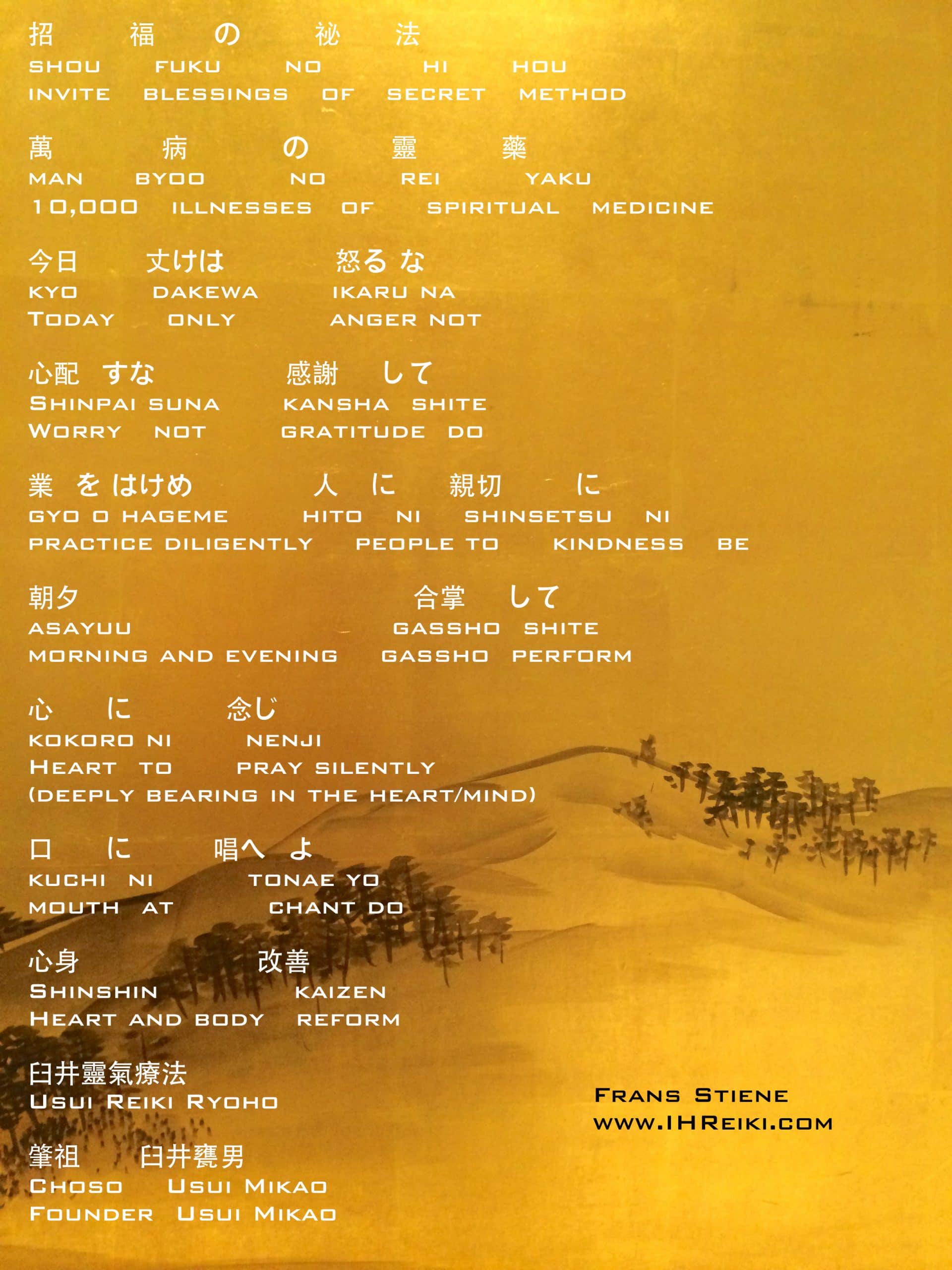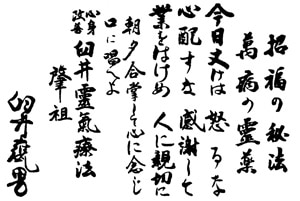
Check out the blending of the Japanese and English precepts in this image.
The above kanji are directly from the precepts below which is said to be in Mikao Usui’s hand writing. The original kanji is directly translated into English.

Thank you Hiromi Hayashi for your help with the kanji and translations.
Based in Holland, Frans Stiene teaches in North America, Europe, UK, Australia and Asia.
Frans is also the author of Reiki Insights, it is the continuation of his previous book The Inner Heart of Reiki, taking your personal practice and understanding of the system of Reiki yet another step deeper.


Comments 3
Hi All,
Here are some lovely quotes from Ryōjun Shionuma which link in with the precepts:
(Ryōjun Shionuma is well known in Japan since he has completed two of the most difficult ascetic practices of the Shugendō tradition: the Ōmine Sennichikaihōgyō (One-thousand Days Trekking Practice on Mt. Ōmine) and the Shimugyō (Four-fold Renouncing Practice).
“For me, gyō has been a way to let my spiritual life grow and to make it more all-encompassing.”
“This is also why I think that performing gyō is a never ending task, i.e. a life-long activity.”
“The Shimugyō taught me the most important precepts for guiding my life: refrain from being angry at someone, refrain from hating someone and never blame someone else for what has happened to you.”
“And if I desire what I do not yet have, I am going to suffer because something is lacking and I will not be content in my present situation. However, if I am able to value those things in my situation which are blessings rather than focusing on what may be lacking, I can feel thankful and this make an enormous difference in the way I live and encounter others.”
“The fundamental justification for doing gyō is nothing more and nothing less than that simple act of sharing.”
“Who am I?” “What is a human?” “What is life?” These are questions we forget to think about when we live a life filled with contentment and happiness. I am convinced that if we want to answer these questions, we need to rouse to action and take the challenge of embarking on a gyō. “
“I aim at not causing worry for others.”
Love
Frans
Hi All,
Here are some more from Ryōjun Shionuma.
“I would like at this point to reflect on what “practice” or “gyō” means in this context. For some, gyō means a special period of time of one-hundred or one-thousand days, but for others gyō is more of a life-time activity or, more precisely, a way of life. Furthermore, for some, gyō is undertaken with the aim to reform oneself, and thus is seen as a self-centered activity. In contrast, others understand gyō as being performed for the benefit of other sentient beings, and is thus seen as an altruistic activity. In short, there are many different ways to understand what gyō really is. “
“I am fully aware of all these points of view; however, as I have performed all kinds of gyō, I must confess that what is most important for me about gyō is not so much that “I” am performing or accomplishing something but, more essentially, that “I” am graced by the gift of being able to perform or accomplish an ascetic practice (gyō).”
“For mountain ascetics, gyō is to live according to the spirit of that precept.”
Enjoy
Frans
This word-by-word Japanese to English translation was exactly what I have been searching for. Your graphic is gorgeous!
Peace and many thanks,
Shelley